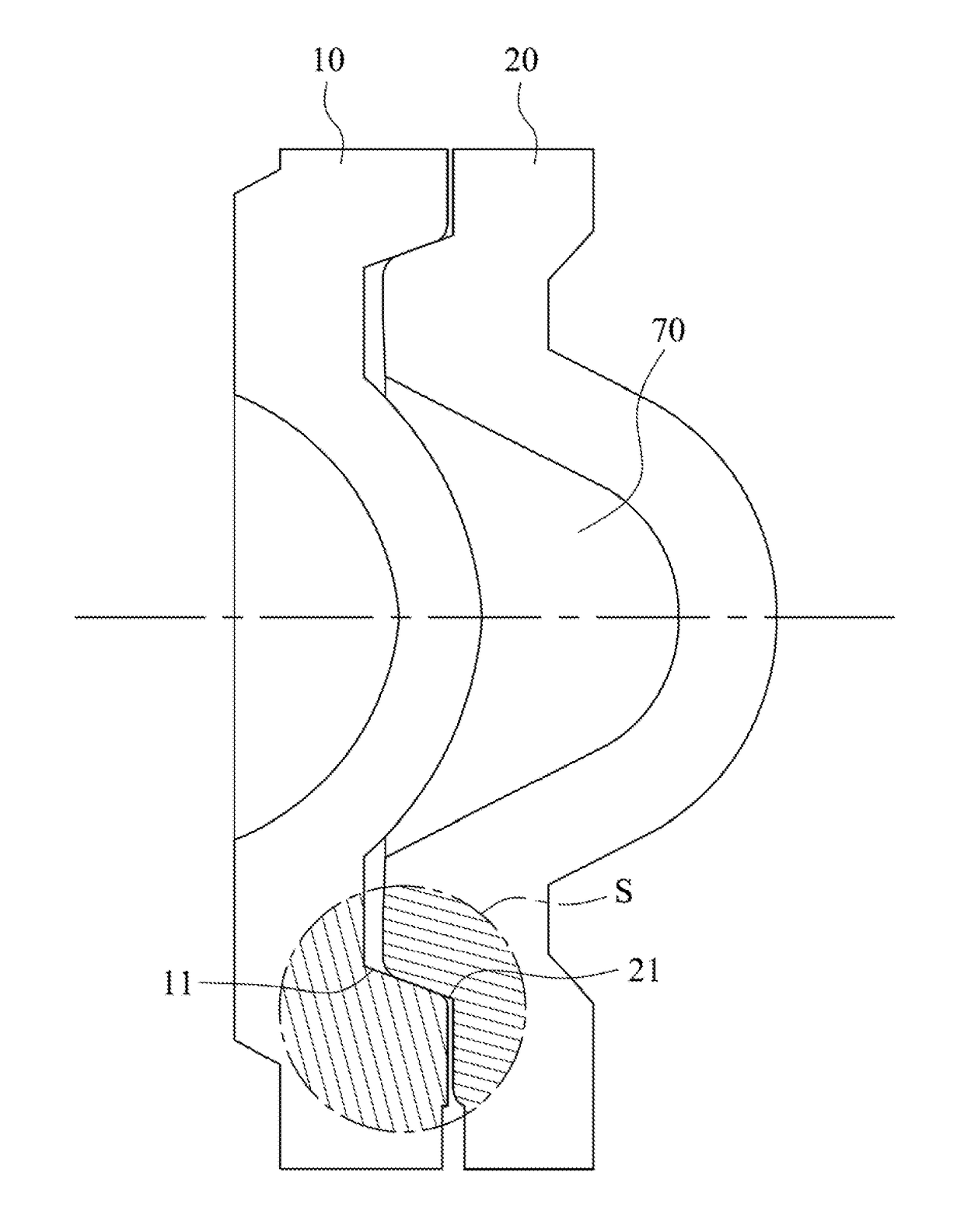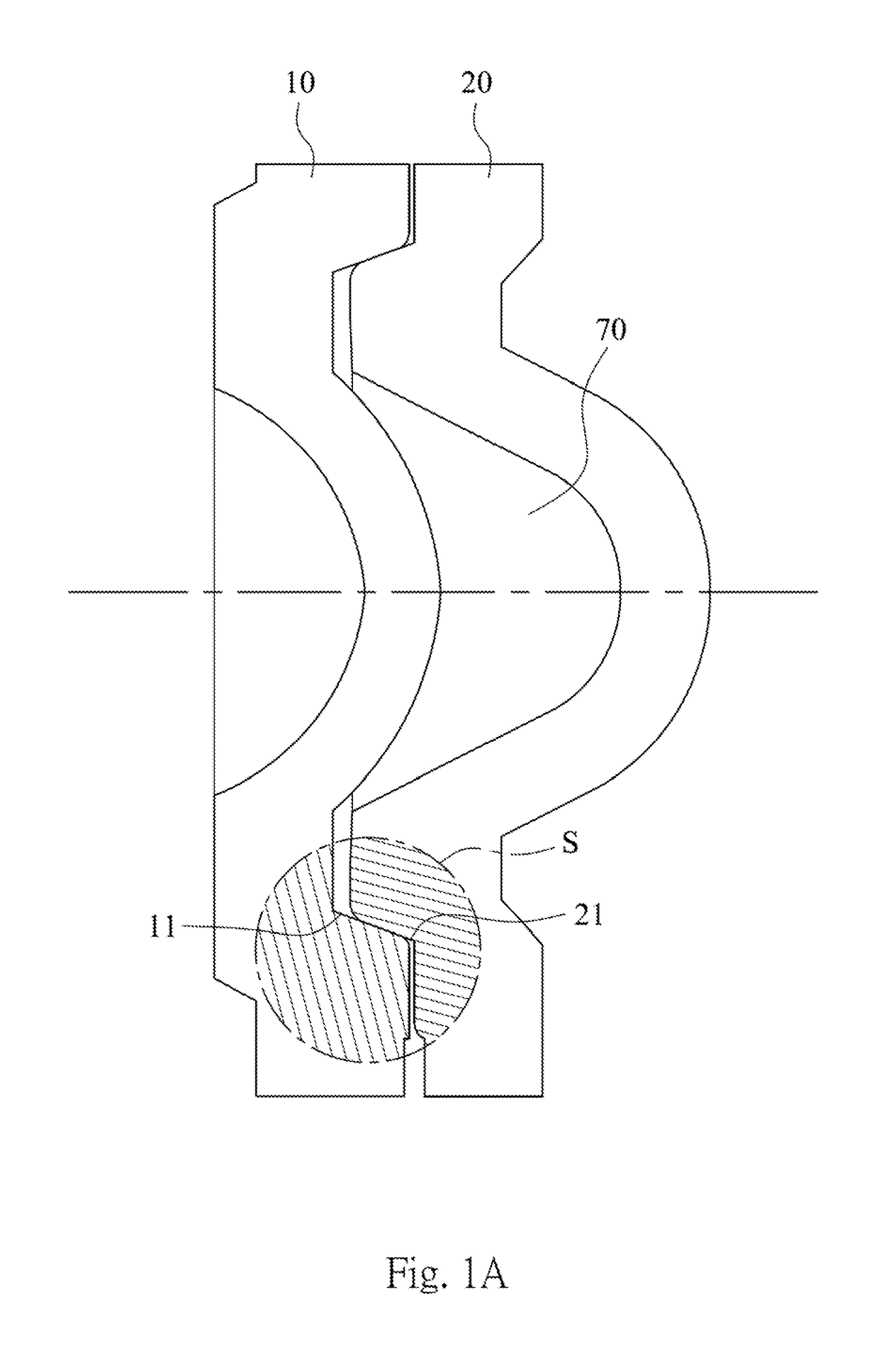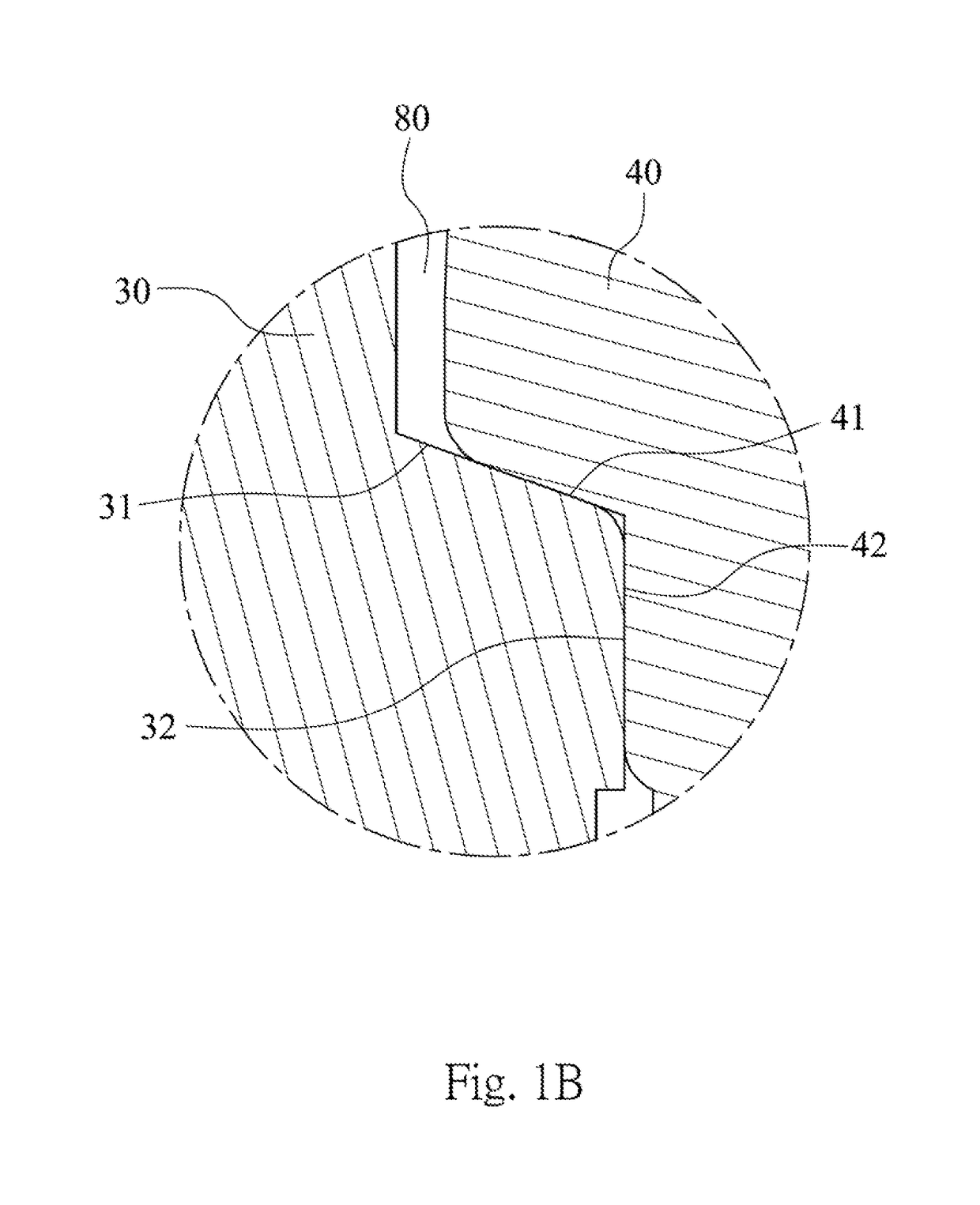Optical lens assembly
a technology of optical components and lens components, applied in the field of optical lens components, can solve the problems of reducing and affecting the optical performance of the optical system
- Summary
- Abstract
- Description
- Claims
- Application Information
AI Technical Summary
Benefits of technology
Problems solved by technology
Method used
Image
Examples
1st embodiment
[0056]FIG. 2A is a cross-sectional view of an optical lens assembly 100 according to the 1st embodiment of the present disclosure. FIG. 2B is an exploded view of the optical lens assembly 100 in FIG. 2A. FIG. 2C is an enlarged view of a part T in FIG. 2A. The optical lens assembly 100 includes a first lens element 110 and a second lens element 120.
[0057]The first lens element 110 made of plastic material includes a first contacting surface 111, a parting line 114, an air duct 116 and an outer surface 115, wherein the outer surface 115 is located on the outer region of the first lens element 110, and the outer surface 115 and the parting line 114 have a level difference. Furthermore, an extended plane of the parting line 114 parallel with an optical axis Z is a parting plane 119.
[0058]The second lens element 120 made of plastic material includes a first contacting surface 121 and an outer surface 125, wherein the outer surface 125 is located on the outer region of the second lens ele...
2nd embodiment
[0060]FIG. 3 is a partial cross-sectional view of an optical lens assembly according to the 2nd embodiment of the present disclosure. A position of the partial cross-sectional view shown in FIG. 3 is correspondent to the position shown in FIG. 2C. The optical lens assembly includes a first lens element and a second lens element.
[0061]The first lens element made of plastic material includes a first contacting surface 211 and an outer surface 215, wherein the outer surface 215 is located on the outer region of the first lens element.
[0062]The second lens element made of plastic material includes a first contacting surface 221, a parting line 224 and an outer surface225, wherein the outer surface 225 is located on the outer region of the second lens element, and the outer surface 225 and the parting line 224 have a level difference. Furthermore, an extended plane of the parting line 224 parallel with an optical axis Z is a parting plane (not otherwise herein provided).
[0063]The first c...
3rd embodiment
[0064]FIG. 4 is a partial cross-sectional view of an optical lens assembly according to the 3rd embodiment of the present disclosure. A position of the partial cross-sectional view shown in FIG. 4 is correspondent to the position shown in FIG. 2C. The optical lens assembly includes a first lens element and a second lens element.
[0065]The first lens element made of plastic material includes a first contacting surface 311 and an outer surface 315, wherein the outer surface 315 is located its on the outer region of the first lens element.
[0066]The second lens element made of plastic material includes a first contacting surface 321, a parting line 324 and an outer surface 325, wherein the outer surface 325 is located on the outer region of the second lens element, and the outer surface 325 and the parting line 324 have a level difference. Furthermore, an extended plane of the parting line 324 parallel with an optical axis Z is a parting plane (not otherwise herein provided).
[0067]The fi...
PUM
 Login to View More
Login to View More Abstract
Description
Claims
Application Information
 Login to View More
Login to View More - R&D
- Intellectual Property
- Life Sciences
- Materials
- Tech Scout
- Unparalleled Data Quality
- Higher Quality Content
- 60% Fewer Hallucinations
Browse by: Latest US Patents, China's latest patents, Technical Efficacy Thesaurus, Application Domain, Technology Topic, Popular Technical Reports.
© 2025 PatSnap. All rights reserved.Legal|Privacy policy|Modern Slavery Act Transparency Statement|Sitemap|About US| Contact US: help@patsnap.com



